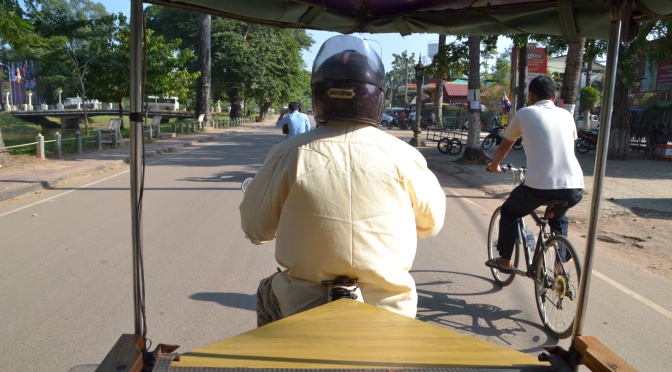
 3) Psar Chaa or known as the ‘Old Market’
3) Psar Chaa or known as the ‘Old Market’
Address: Psar Chaa Road, Siem Reap, Cambodia
For Filipinos, this isn’t something new. Stalls are lined up selling souvenirs, clothes, food, and sundry items (same with tiangges). You can also ask for discounts on several items, specially if you’ll buy in bulks.
4) Wat Kesararam – Pagoda of the Cornflower Petals
Address: Road No 6, next to Sokha Hotel
Pagodas and monks welcome visitors and tourists. Please always remember to not disturb monks during prayer or eating times, women are not allowed to touch monks, bow slightly in the presence of older monks, don’t point soles of feet or fingers towards monks or Buddha statues, sit with feet tucked behind rather than crossed, hats off in the monastery grounds, take off your shoes in the building, speak softly, ask before taking pictures, don’t enter closed buildings without permission, contribute what you can to the donation box. (Reference: http://www.globaltravelmate.com/asia/cambodia/siem-reap/siem-reap-pagodas/734-siem-reap-wat-kesararam.html)
Self-portrait before lunch time! =)

























